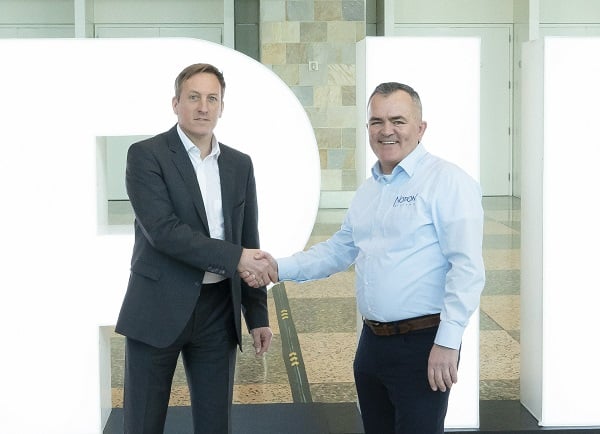WASHINGTON, D.C., April 21, 2023 — National Photonics Initiative (NPI) advocates met with lawmakers this week to discuss reauthorization of the National Quantum Initiative (NQI), which was originally signed into law in 2018. Representatives from Caltech, the Duke Quantum Center, Harvard, University of Maryland, University of Rochester, Northwestern, IBM, Intel, Infleqtion, IonQ, Google, MKS Instruments, Applied Energetics, SRI, TOPTICA USA, and NY Creates were among those who met with members of the House and Senate on committees including the Senate Committee on Commerce, Science, and Transportation and the House Committee on Science, Space, and Technology. Per the original NQI Act, a second authorization is necessary to continue funding authorizations for the initiative for the next five years.
WASHINGTON, D.C. — Optica Publishing Group will begin publishing Optica Quantum in September 2023. The journal will be dedicated to highly selective results in quantum information science and technology (QIST). The journal joins the society’s existing portfolio of journals in optics and photonics. Michael Raymer, Knight Professor of Liberal Arts and Sciences Emeritus at the University of Oregon, will serve as the journal’s inaugural editor-in-chief.

Michael Raymer, Knight Professor of Liberal Arts and Sciences Emeritus at the University of Oregon. Courtesy of Optica.
OBERKOCHEN, Germany — ZEISS Ventures is leading a £2 million ($2.49 million) seed funding round into ZOMP, a Cambridge, England-based startup and University of Cambridge spinout. ZOMP’s instrument combines whole-cell 3D imaging with flow cytometry. The innovation is based on Zomp’s LightGate technology that incorporates a microlens array to collect fluorescence and instantly measure multiple 2D views of the same cell. The data establishes an instant 3D snapshot of the cell as it passes through a tunable light sheet, by deconvoluting the series of images into a 3D view of the cell. ZOMP will use the funds to develop a minimum viable product and identify optimal customer applications.
NEW DELHI — The Indian government granted the final approvals necessary for construction to begin on LIGO-India, a nearly identical version of the twin LIGO (Laser Interferometer Gravitational-Wave Observatory) facilities that conducted the first direct detection of gravitational waves in 2015. The Indian government will spend about $320 million to build LIGO-India. First observations are expected by the end of the decade.
DENVER — Optical wireless communications companies BridgeComm and X-lumin Corp. established a two-way exclusive teaming agreement to manufacture and market a ground-to-space communication solution (G2S) designed for all-weather austere locations, operating at high availability year-round. The system functions as a ground terminal supporting bi-directional links to low Earth orbit, medium Earth orbit, and geostationary satellites and can operate as a stand-alone optical ground station or as part of a network.
BROOKLYN, N.Y. — Qunnect, a provider of quantum-secure networking technology, expanded its facilities in the Brooklyn Navy Yard. The newly constructed 4000-sq-ft R&D facility and a 1500-sq-ft network research hub for the GothamQ Network will support the company’s networking technology, designed for scalable deployment on existing telecom fiber infrastructure. The company has launched its QU-SOURCE product, which produces exceptionally pure polarization photon pairs that are readily compatible with telecom fiber and atomic-based quantum devices.
SAN FRANCISCO — Ouster, a provider of high-performance lidar sensors for the automotive, industrial, robotics, and smart infrastructure industries, received notification by the New York Stock Exchange (NYSE) that it is not in compliance with the NYSE’s price criteria for continued listing standards because the average closing price of the company’s common stock was less than $1.00 over a consecutive 30-trading-day period. Ouster previously announced on April 7 its plans to effect a one-for-10 reverse stock split, which it expects will cure the stock price deficiency. The company expects the reverse stock split to begin trading on a split-adjusted basis on April 21. In accordance with NYSE rules, Ouster has a period of six months from receipt of the notice to regain compliance with the NYSE’s continued listing minimum price criteria.
ST. FLORIAN, Austria — EV Group, a supplier of wafer bonding and lithography equipment for the microelectromechanical systems (MEMS), nanotechnology, and semiconductor markets, and Notion Systems, a supplier of industrial inkjet coating systems for functional materials, agreed to develop a fully integrated and automated nano-imprint lithography solution with inkjet coating capabilities. Per the agreement, the two companies will develop a customized inkjet module to be integrated in EVG’s industry-benchmark HERCULES NIL platform based on EVG’s SmartNIL technology.

Thomas Glinsner, corporate technology director for EV Group (left), and Antonio Schmidt, senior vice president for sales and marketing for Notion Systems (right), at SPIE Photonics West 2023 in San Francisco. Courtesy of EV Group.
TOKYO — Technology company Toppan partnered with Hokkaido University to launch the Comprehensive Dementia Research Unit. The unit will collaborate with the Hokkaido University Collaborative Project’s Cognitive Science Research Center, which conducts comprehensive research on diagnosis technologies for dementia. The Comprehensive Dementia Research Unit will contribute to the advancement of dementia diagnosis and treatment by undertaking related research, including developing technologies for early Alzheimer’s disease detection. Toppan and Hokkaido University will conduct research in collaboration with the latter’s Global Research Center for Food & Medical Innovation and other related facilities.
MELBOURNE, Fla. — L3Harris Technologies received a contract to provide next-generation geostationary imaging and sounding instruments for the Japan Meteorological Agency (JMA) that will monitor and predict severe weather events more accurately. The award continues L3Harris’ legacy of producing critical space-based weather instruments for Japan. Under the terms of the contract with the Mitsubishi Electric Group, L3Harris will build and deliver an advanced imager and sounder for JMA’s Himawari-10 satellite. The imager will use a similar technical platform as L3Harris’ Advanced Baseline Imager on NOAA’s Geostationary Operational Environmental Satellite-R.
COLORADO SPRINGS, Colo. — The U.S. Space Force’s 98th Space Range Squadron has selected ExoAnalytic Solutions’ HARRIER (Highly Mobile Autonomous Rapidly Relocatable Integrated Electro-optical Resources) software-defined telescope system as the first dedicated sensor for the National Space Test and Training Complex. The complex is a strategic asset of the Space Force serving all five branches of the military with models and simulations of space-based target sets for pre-deployment preparation, large-force exercises, testing, and training.
GLASGOW, Scotland — Vector Photonics won a £1 million industrial research project to commercialize its 1-W all-semiconductor photonic crystal surface emitting lasers (PCSELs) for artificial intelligence (AI) applications. The AI PCSEL will feature the increase in computer processing power necessary to overcome the data transmission bottleneck faced by current AI solutions, the company said. At 1 W, Vector said, the PCSEL’s optical power will be at least 10× that of incumbent distributed feedback lasers, which currently operate at a maximum of 100 mW. The company is developing the PCSEL offering to support up to 20 data channels per chip.